Guide to Lead Scoring for B2B Sales [Models + Best Practices]
Casey O'Connor
Lead scoring is the process of assigning numeric value to a predetermined set of leads’ demographic and behavioral characteristics.
The process of lead scoring helps sales reps rank and prioritize leads according to who is most likely to make a purchase.
Lead scoring also helps improve overall lead quality, which translates to improved pipeline and bottom-line metrics. In fact, teams that implement lead scoring have reported over 75% improvement in lead generation ROI.
In this article, we’ll go over everything you need to know about lead scoring, including how to do it, why it’s so important for sales teams to master, a few models to consider, and some best practices.
Here’s what we’ll cover:
- What Is Lead Scoring?
- Why Is Lead Scoring Important?
- How to Score Leads
- 7 Lead Scoring Models
- Lead Scoring Best Practices
- Predictive Lead Scoring Explained
What Is Lead Scoring?
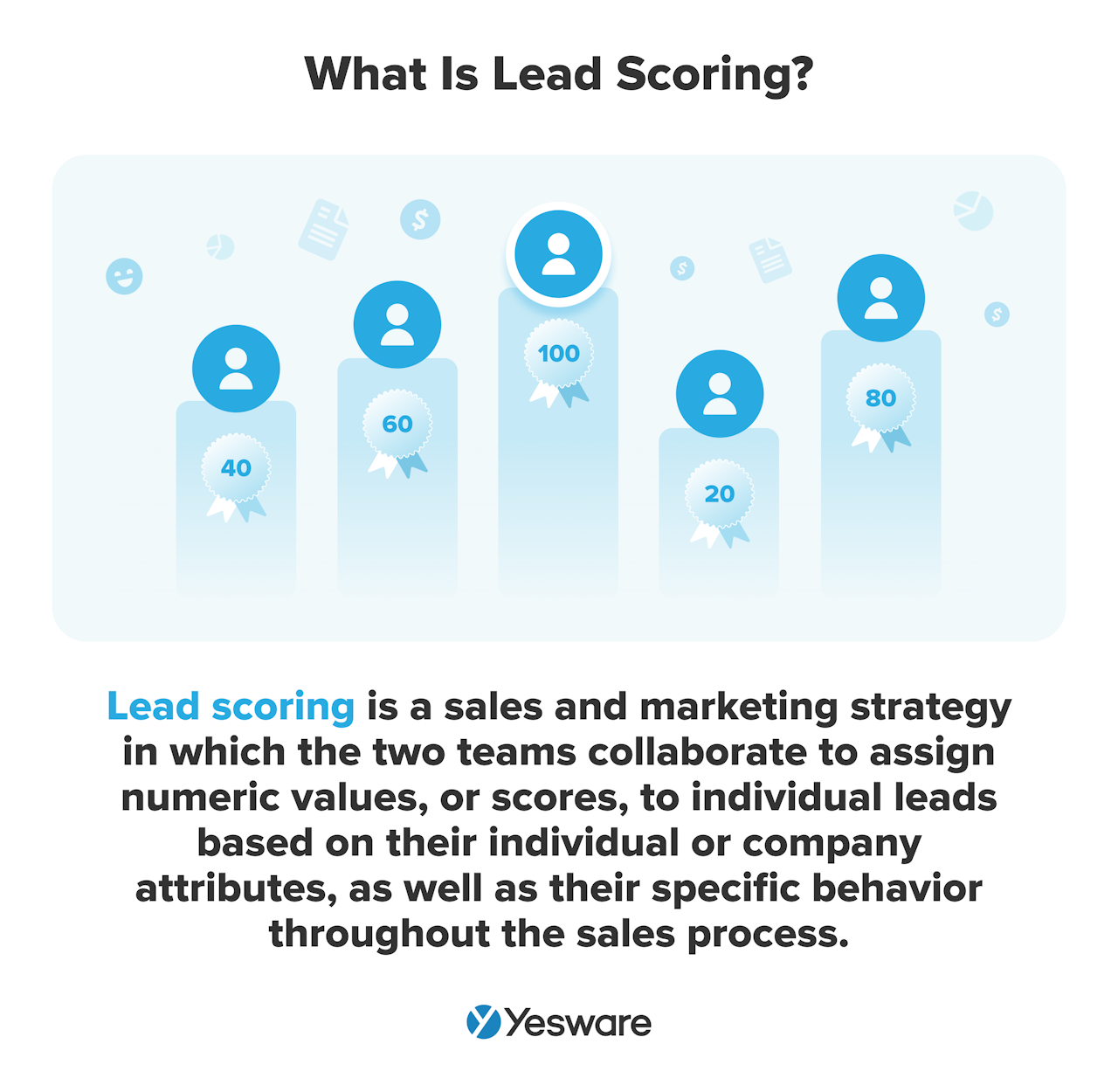
Lead scoring is a sales and marketing strategy in which the two teams collaborate to assign numeric values, or scores, to individual leads based on their individual or company attributes, as well as their specific behavior throughout the sales process.
Scoring leads helps marketing and sales teams prioritize how they spend their time and resources. Generally, the higher score a lead generates, the more likely they are to ultimately (and, in many cases, imminently) purchase your product. The score lets sales reps know whether a lead is worth their time and effort.
Leads are scored according to a variety of attributes, characteristics, and behaviors, including (but not limited to):
- Company size
- The lead’s role at the company
- Time spent by the lead on various pages of your website and/or number of website visits
- Email subscription status
- Lead source
This data, and the subsequent scoring process, helps sales reps determine who to contact first (and who, perhaps, can be disqualified entirely and isn’t worth contacting at all).
Sales reps and marketers generally gather buyer data from two main categories: explicit lead scoring and implicit lead scoring.
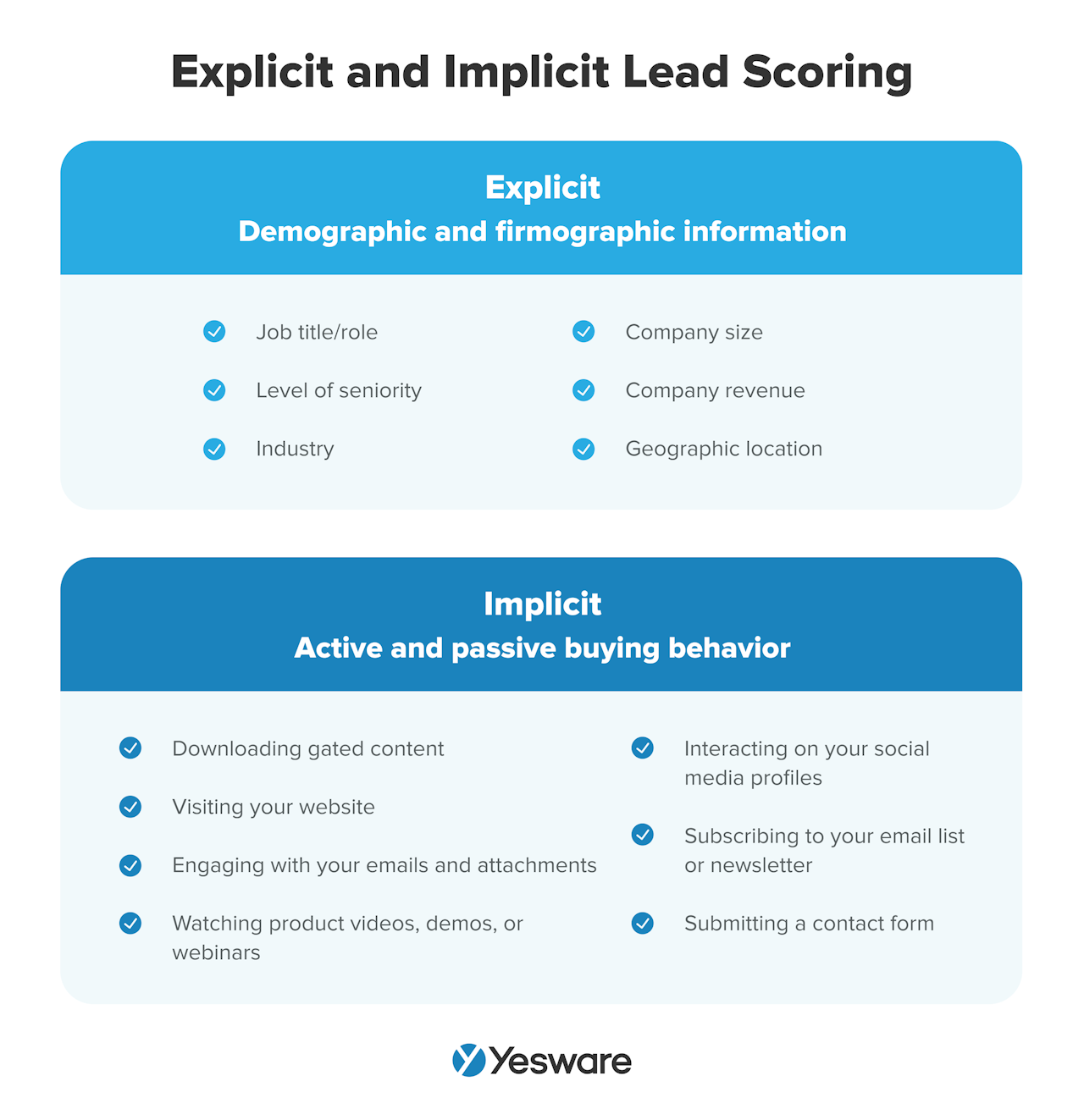
Explicit Lead Scoring
Explicit lead scoring data is objective information that comes directly from the lead, or is otherwise accessible to the public.
This data generally includes demographic and firmographic information, such as:
- Job title/role
- Level of seniority /experience in the industry
- Industry
- Company size
- Company revenue
- Geographic location
Savvy sales teams leverage technology or sharp research skills to find this data themselves, instead of asking leads directly. This allows them to dedicate more of their conversation time to high-value, open-ended questions that help them tailor their pitch to the lead’s unique needs.
Implicit Lead Scoring
Implicit lead scoring data can be a bit more challenging to gather and/or interpret because it’s more subjective.
When it comes to implicit lead scoring, sales reps analyze a lead’s behavior and assign values based on their observable actions.
Implicit lead scoring is based on both active and passive buying behavior, including (but not limited to):
- Downloading gated content like white papers or case studies
- Visiting your website (assigning different scores for visiting specific pages and/or higher scores for more frequent visits)
- Opening, clicking through, or otherwise engaging with your emails and attachments
- Watching product videos, demos, or webinars
- Interacting on your social media profiles
- Subscribing to your email list or newsletter
- Submitting a contact form
Each behavior earns leads a certain number of points. Visiting the pricing page, for example, is usually indicative of serious intent to purchase — this might earn a lead more points than visiting the home page.
On the other hand, a visit to the career page usually indicates the visitor isn’t interested in buying — this behavior may actually earn them negative points, depending on your team’s specific value assignments.
Implicit lead scoring relies on a sales team’s ability to track and interpret leads’ behavior in real-time. This sounds straightforward, but when you multiply the number of attributes each lead demonstrates times the number of leads in the pipeline, it can get complex in a hurry. Lead scoring technology can be a huge help with this.
Why Is Lead Scoring Important?
The lead scoring process takes a bit of legwork to get off the ground, but the benefits can be significant.
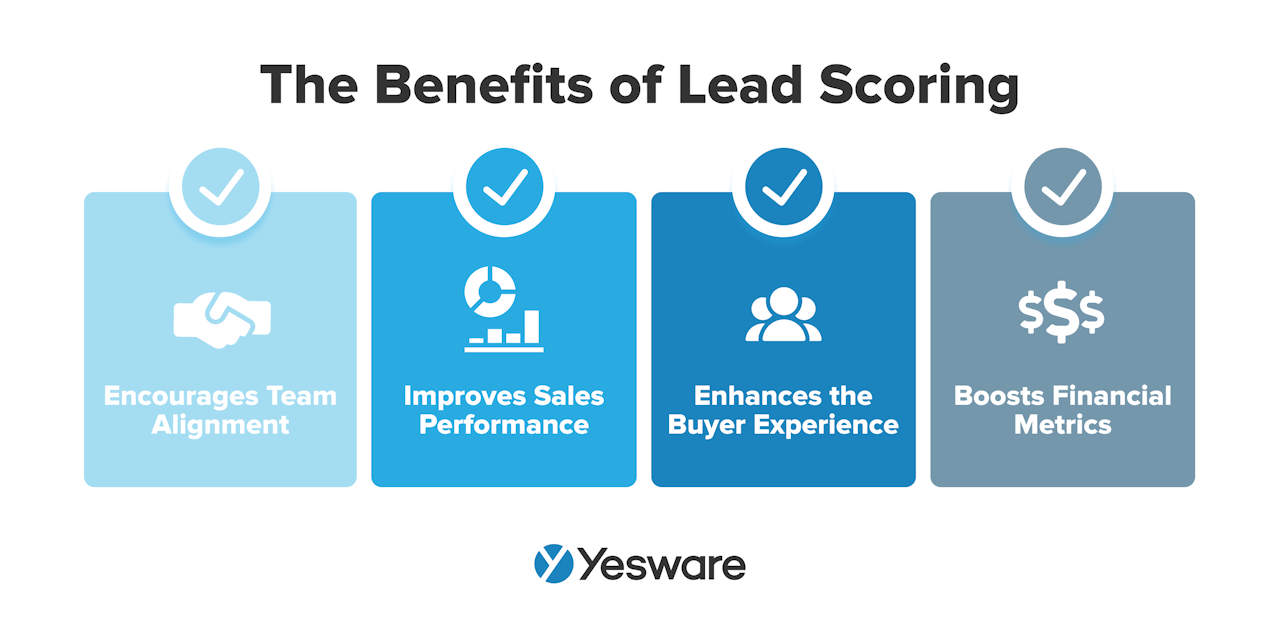
Encourages Team Alignment
Creating a lead scoring process naturally improves communication and alignment between the sales and marketing teams; part of the process includes the two teams coming together to mutually agree on what defines leads who are worth a sales rep’s time, and what indicates a lead is best eliminated from the funnel.
This alignment improves overall working conditions and makes lead-handoff (i.e., the transition from MQL to SQL) a more seamless process.
Improves Sales Performance
Lead scoring helps sales reps waste less time on poor-fit or not-ready leads, which improves sales productivity, close rates, and overall sales performance. The process enables sales reps to spend their time and resources on the leads that are most likely to convert.
Lead scoring also helps sales reps determine which leads could eventually be a great fit but are indicating that they may need more time. Once these leads are identified, they can receive lead-nurturing content that will keep them engaged until they’re ready to buy.
This is as important as targeting the best-fit leads who are ready to buy very soon — research shows that a solid lead-nurturing process can increase close rates by 30%.
Enhances the Buyer Experience
Lead scoring ensures that only good-fit leads move through the sales funnel; it cannot be understated how significantly this will impact the impact of your sales funnel.
Research shows that most sales teams only manage a 25% legitimacy rate when it comes to lead generation, and only 21% of that small number will ultimately convert to a sale.
By avoiding poor-fit leads through effective lead scoring, sales teams can target their methodologies, strategies, and tactics to the needs of the true target buyer.
Tracking your lead scoring efforts will also help identify which marketing and sales campaigns are most effective, so you can further refine your strategy and content around what resonates most with your well-qualified buyers.
Boosts Financial Metrics
In addition to its many other benefits, lead scoring also improves the bottom line. Studies have shown that an effective lead scoring process can boost a company’s annual revenue by up to 50%.
It also helps optimize marketing spending and lower customer acquisition costs (CAC).
Lead scoring impacts every team and organization differently, depending on their unique goals and sales process. That being said, it can be especially beneficial for products with longer sales cycles, higher price tags, or other complexities.
How to Score Leads
The specifics of your lead-scoring process — that is, the set of demographic, firmographic, and behavioral attributes you look for and the values you assign to each — will vary according to your unique sales process and the needs and buying behavior of your target market.
That being said, there is a framework that most teams can follow to get their lead-scoring process off the ground.
1. Clean Up and Analyze Sales and Marketing Data
Lead scoring is a data-driven process. When you’re just starting to figure out how to score leads for your business, start with your historical sales data. Sales and marketing should sit down together to do this work.
Start by calculating the current conversion rate for all leads; this will be your baseline for lead scoring. You can find this number by dividing your number of new customers by the total number of leads your team generates.
You’ll also want to look further than the numbers.
What traits do your most successful customers have in common? What behaviors did they exhibit right before they closed? Are they all from a common demographic?
Look for common threads or unifying factors that can help define what a great-fit lead who ultimately goes on to become a profitable customer looks like for your company.
2. Talk to Sales
You’ll also want to interview sales reps directly to find out their perspective on the same questions.
How would they describe leads that turn out to be most fruitful? What types of interactions move the needle most with good-fit buyers? How many touchpoints, on average, does each sale require? What website pages indicate seriousness in a buyer? Which job titles are held by the decision-makers?
Sales reps can offer insight into all of these questions, which will help your team make decisions about how each behavior should be weighted and scored.
3. Talk to Customers
The last stop on your data-mining tour should be your customers themselves.
Much like sales reps, happy customers can be a wealth of insight into which parts of the sales process were most influential for them, so you can help interpret similar lead behavior accordingly.
For this step, make sure you interview customers who completed both long and short sales cycles.
4. Define Your Attributes and Values
Once you’ve gathered all of the hard metrics and anecdotal data, you can start to build a profile of what a great-fit buyer looks like and how they behave as they become readier to buy.
List out these attributes as specifically and tangibly as you can. Sales and marketing should both be involved in the process of weighing and assigning value to each characteristic and behavior.
5. Automate When You Can
Lead scoring is pretty straightforward on the surface, but it can get complex in a hurry when you consider the number of leads in the pipeline at any given time. Lead scoring software can add automation to the process to help streamline your efforts.
7 Lead Scoring Models
Lead scoring models help ensure that the score you assign to each lead reflects the actual compatibility they have with your offer and how likely they are to buy.
1. Purchase Intent Model
A purchase intent lead scoring model helps sales reps estimate a lead’s probability of converting.
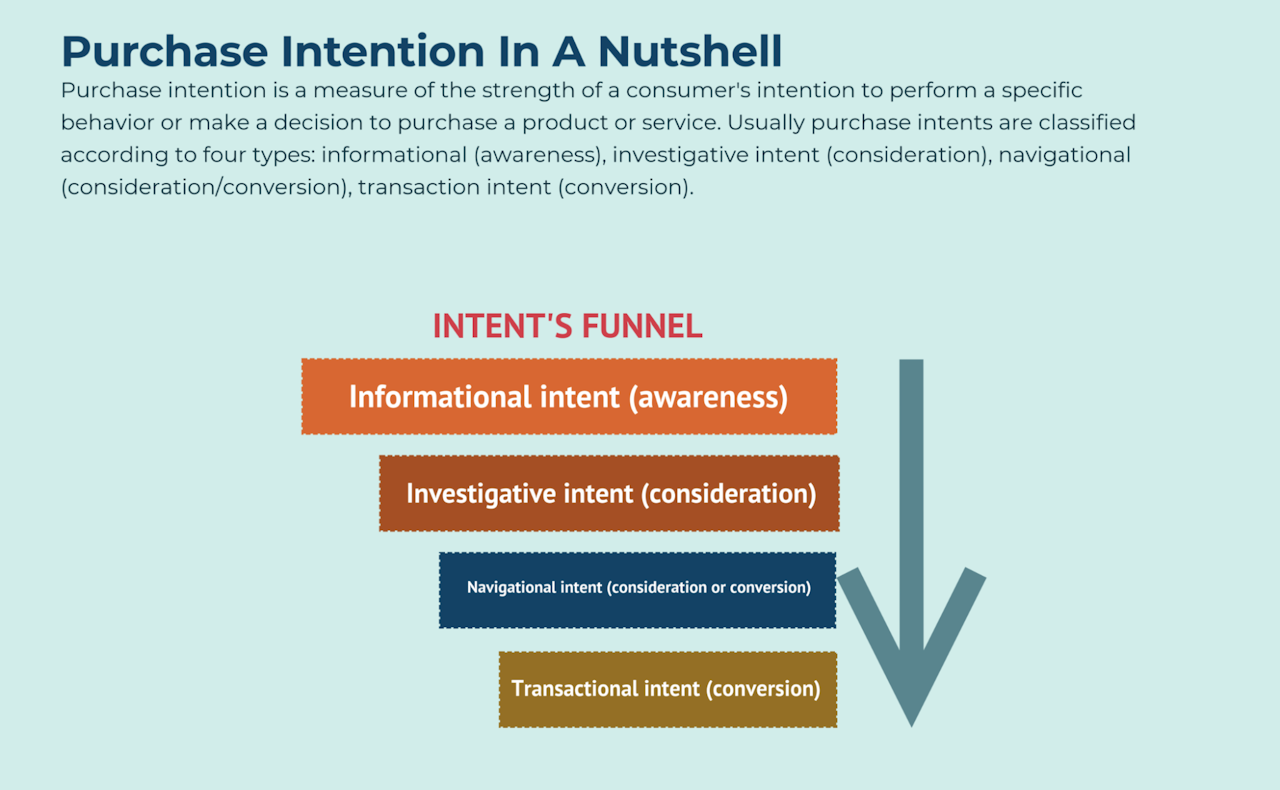
Purchase intent data can be gathered from first-party or third-party sources.
This model helps sales reps pinpoint where each lead stands in the sales process and how to strategically approach each according to their behavior.
2. Demographic Model
A demographic model focuses heavily on the characteristics of your target buyer.

If, for example, you sell an elementary-aged app subscription, you would assign a higher score to a parent of a seven-year-old than to a parent of a middle-schooler, and a non-parent would receive the lowest (or even a negative) score.
A demographic lead scoring model is very effective at filtering out outliers from the sale process.
3. Firmographic Model
A firmographic lead scoring model revolves around company characteristics.
Your ideal customer profile (ICP) can help you define which firmographic metrics make up your most valuable leads. 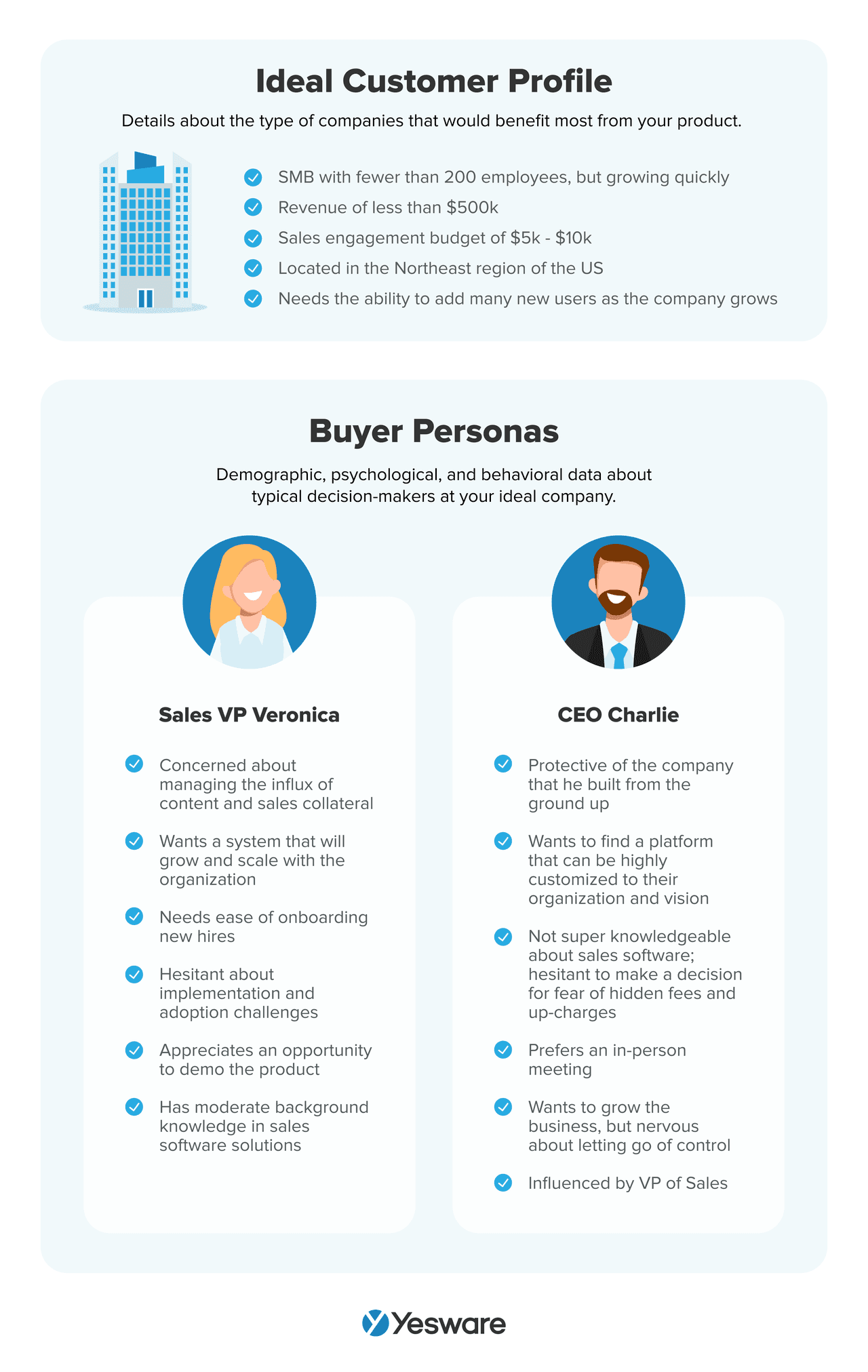
4. Online Behavioral Model
An online behavior lead scoring model prioritizes exactly what you might guess: a lead’s online behavior. 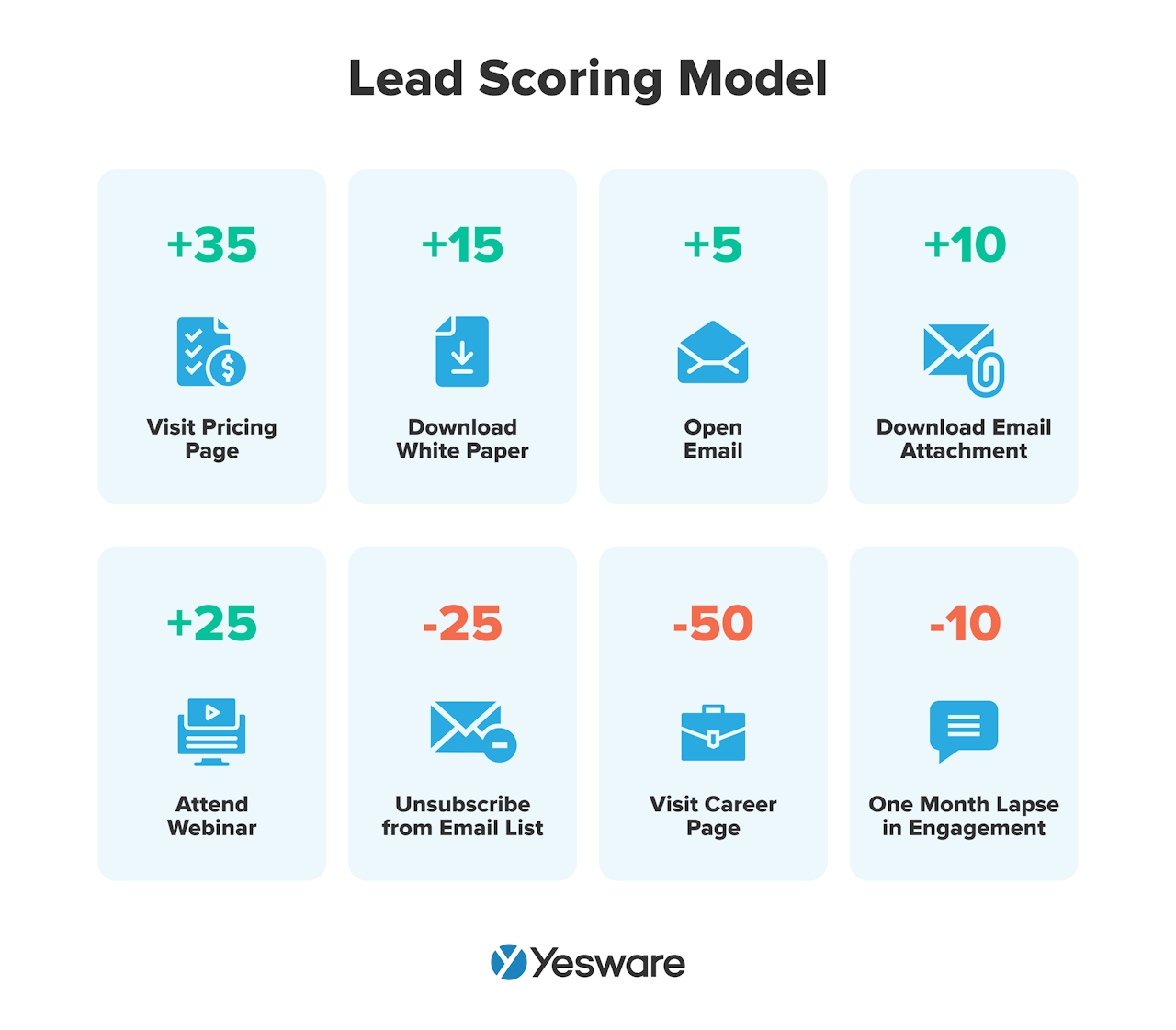 This includes things like whether they visit your website, which pages they visit and for how long, any forms they fill out, and any content they download.
This includes things like whether they visit your website, which pages they visit and for how long, any forms they fill out, and any content they download.
Pricing pages, for example, usually carry more weight because leads who visit this page are interested enough in your offer to want to know how much it costs. Likewise, someone who visits your website 30 times is probably more likely or more ready to buy than someone who has visited only 3 times in the same time period.
5. Email Engagement Model
Lead scoring according to email engagement is also straightforward; it assigns scores based on how each lead interacts with your emails.
Email engagement is measured through metrics like open rate, click-through rate, and whether or not attachments were opened/downloaded and consumed.
Yesware’s attachment tracking help sales reps identify who their hottest leads are as well as which content stands out the most with page-by-page breakdowns.
![]()
6. Social Media Engagement Model
You can also score leads according to how they interact with your various social media profiles and presence.
Likes, comments, and shares all indicate varying levels of engagement with your brand and can be weighted and scored accordingly.
7. Spam and Negative Scores
It’s also important to keep in mind that leads can generate negative scores as well as positive ones.
Website visitors who land on your career page, for example, probably aren’t interested in purchasing from you; a negative score for anyone who visits that page will help indicate their intent.
There are other behaviors and characteristics that leads may exhibit that also indicate they aren’t worth your time. Unsubscribing from your email list, using a personal email instead of a business one, writing “student” in the job title field, and using spam-like responses when filling out forms are all indicators that the “lead” isn’t a high-value one and should be deprioritized. A negative score can help balance the scales accordingly.
Most teams use a hybrid lead scoring model, combining pieces from each of the models outlined above to get the most complete profile of their leads’ positioning.
Tip: Looking to improve your sales processes and strategies? Grab our free ebook below filled with data-backed findings.
 Sales Engagement Data Trends from 3+ Million Sales ActivitiesLooking at millions of tracked email activity over the past few years, this ebook is filled with our top studies and findings to help sales teams accelerate results.
Sales Engagement Data Trends from 3+ Million Sales ActivitiesLooking at millions of tracked email activity over the past few years, this ebook is filled with our top studies and findings to help sales teams accelerate results.
Lead Scoring Best Practices
Here are some best practices to keep in mind as you develop your lead scoring process.
Define Entry and Exit Points for Each Stage
It’s important for sales and marketing to sit down together to define what characteristics and behaviors define leads and prospects in each stage of the sales funnel.
Specifically, what features distinguish a marketing qualified lead (MQL) from a sales qualified lead (SQL)? How can those defining features be weighted and scored accordingly? The more specific and tangible you can be, the better. 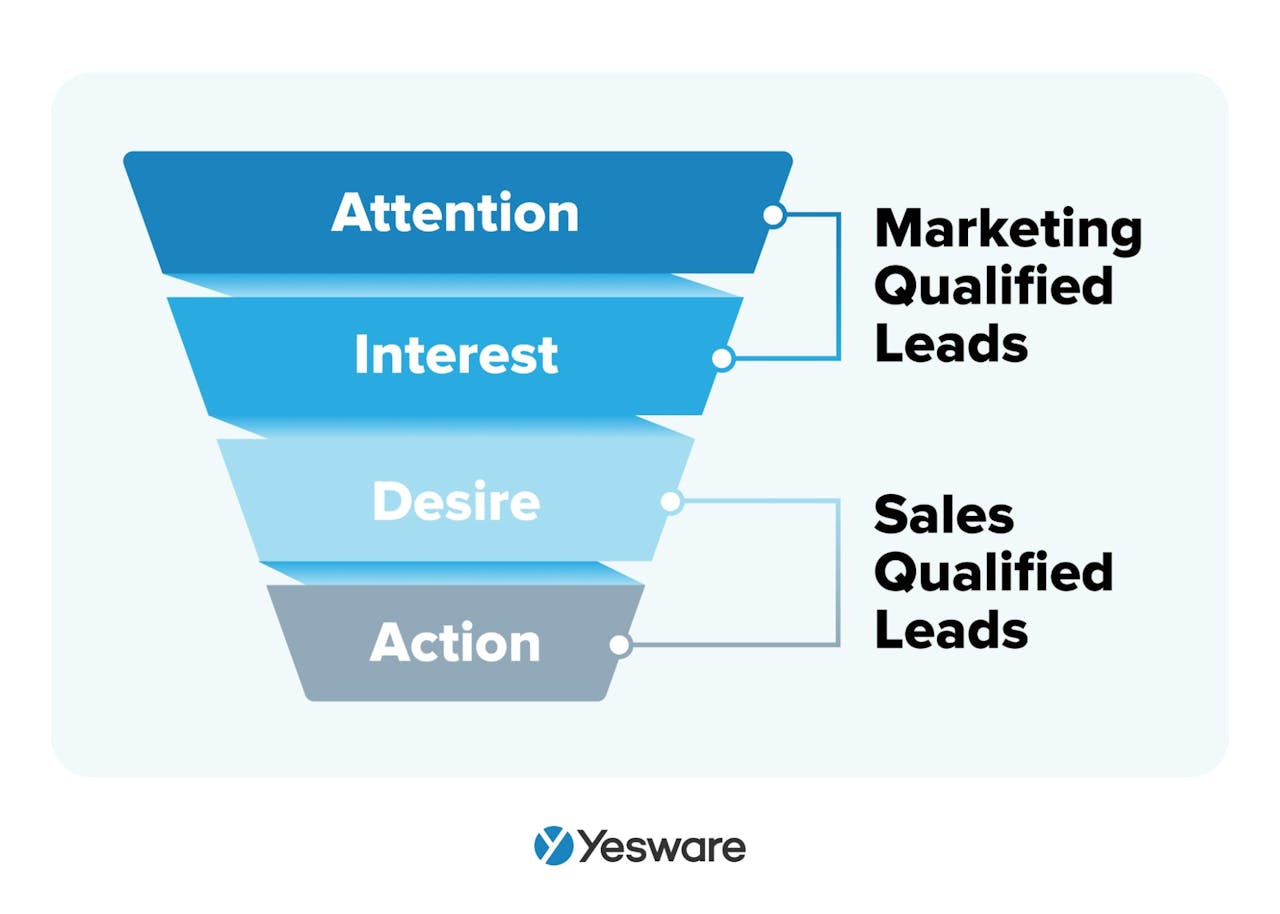 Look carefully, in particular, at how leads behave when they are very close to purchasing. In other words, what was the last thing most of your customers did before they signed their contract? Did they watch a webinar? Participate in a demo? Complete a free trial?
Look carefully, in particular, at how leads behave when they are very close to purchasing. In other words, what was the last thing most of your customers did before they signed their contract? Did they watch a webinar? Participate in a demo? Complete a free trial?
Reverse-engineering a successful customer’s journey can help you pinpoint the exact behaviors that indicate potential conversion and precede a closed-won deal.
Assign Points to Every Action and Attribute
The more behaviors and characteristics you can define and attach to values, the more effective your lead scoring process will be.
Every behavior in the sales process is important and meaningful; it’s up to your sales team to determine just how meaningful each is in the bigger picture of your unique sales process.
Adjust Scoring Models Over Time
The lead scoring development process is not a one-and-done occasion. Your model can and should be updated over time as you learn more and more about the ways your target buyer behaves throughout your sales process.
On a similar note, it’s also important to use a unique lead scoring model for each offer and each target market.
Create Lead Scoring Threshold Alerts
Sales teams that want to take their lead scoring efforts to the next level should consider setting up alerts that notify them when leads have reached a certain score threshold.
Lead scoring software can be a huge asset in this regard. Alerts like these help sales reps reach out to leads at the exact moment when they’re most likely to be engaged and receptive.
Tip: Looking for a lead scoring tool? Vendasta’s “hot lead” scoring system shows your team which prospects are engaging with real-time notifications. Their hyper-customized reports allow salespeople to better understand buyer pain points so they can present the perfect solution.

Predictive Lead Scoring Explained
Predictive lead scoring is a process that uses the power of artificial intelligence (AI) and machine learning to analyze the behavior of past leads and customers. It uses the data it collects to create an algorithm for scoring leads that can accurately predict how likely a given lead is to purchase based on their current behavior.
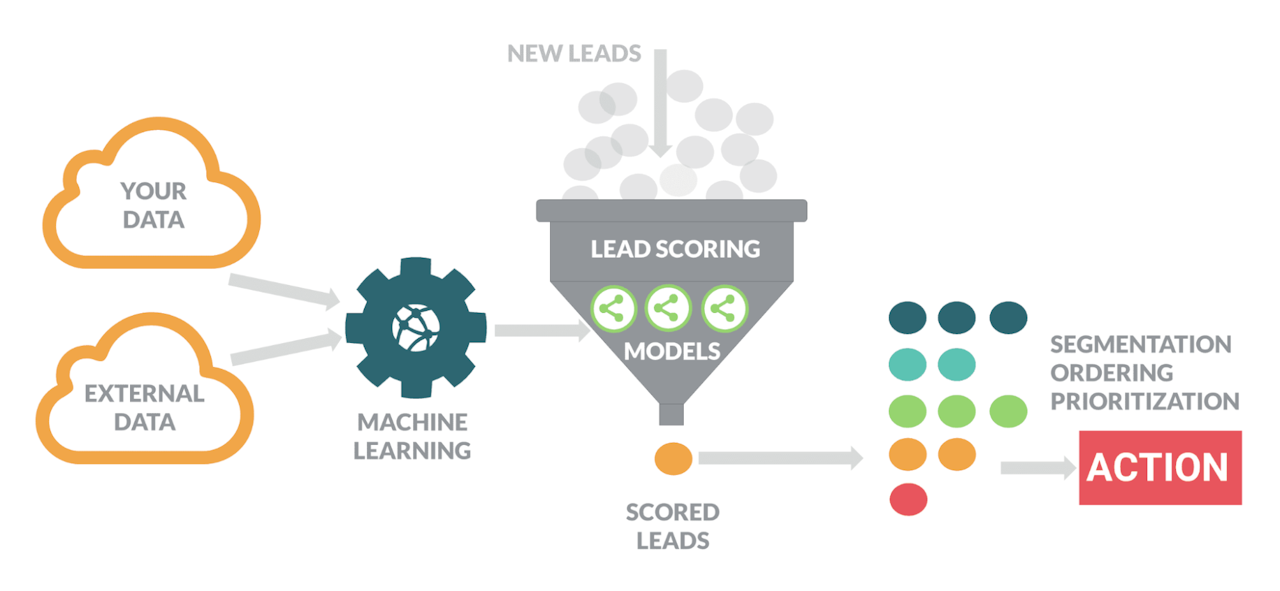
Predictive lead scoring is a powerful tool. Not only does it free up a ton of time for sales reps that would otherwise be spent manually scoring and sifting through leads, but it also gets more capable the longer you rely on it. The more customer data you put in, the more accurate the subsequent process becomes.
Does your team use a lead scoring process? What characteristics or behaviors are most indicative of a best-fit lead or imminent purchase? How do you initiate and differentiate outreach based on a lead score?
Get sales tips and strategies delivered straight to your inbox.
Yesware will help you generate more sales right from your inbox. Try our Outlook add-on or Gmail Chrome extension for free, forever!
Related Articles
Anya Vitko
Casey O'Connor
Jenny Keohane
Sales, deal management, and communication tips for your inbox
![Guide to Lead Scoring for B2B Sales [Models + Best Practices]](/blog/_next/image/?url=https%3A%2F%2Fwww.yesware.com%2Fwp-content%2Fuploads%2F2023%2F08%2Flead-scoring-yesware.jpg&w=1984&q=75)
